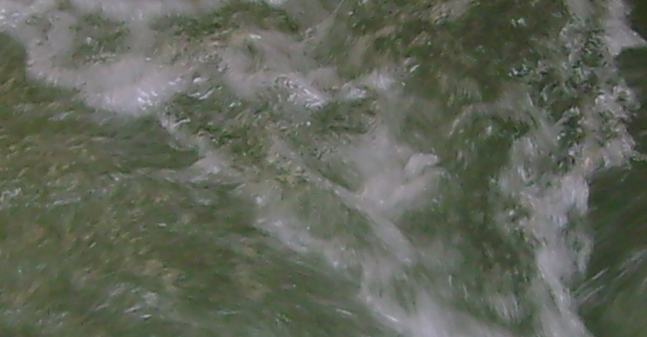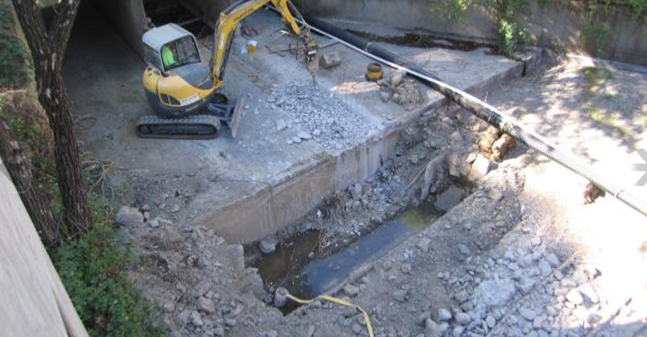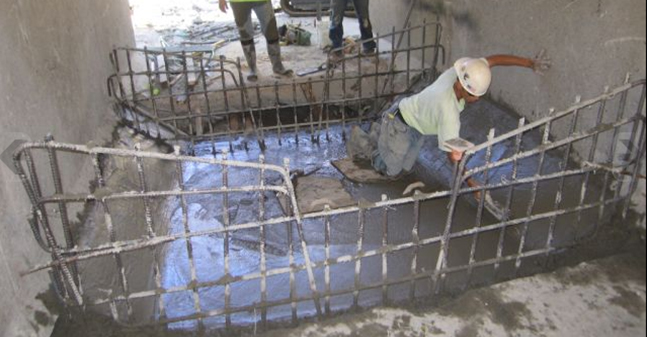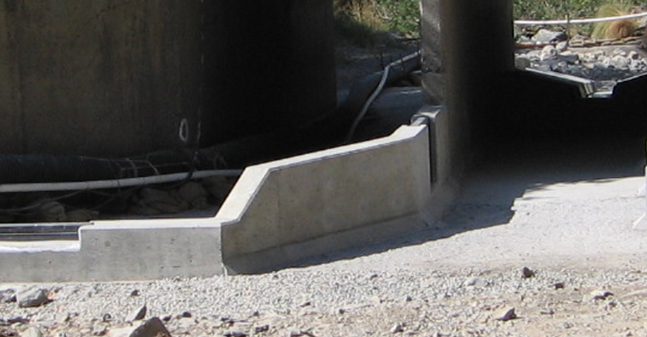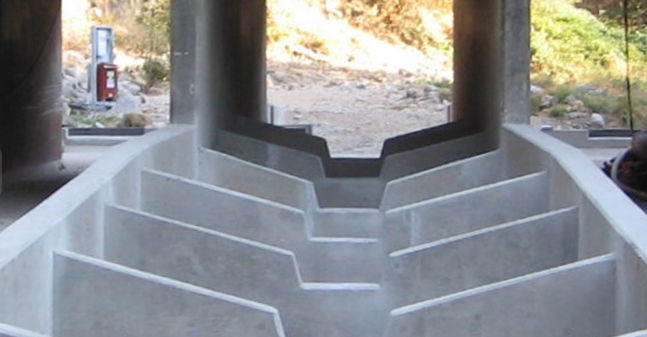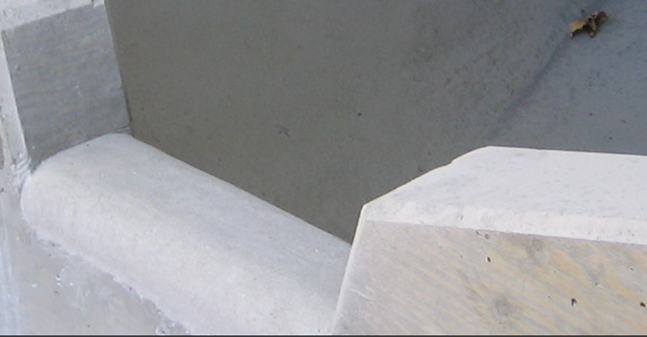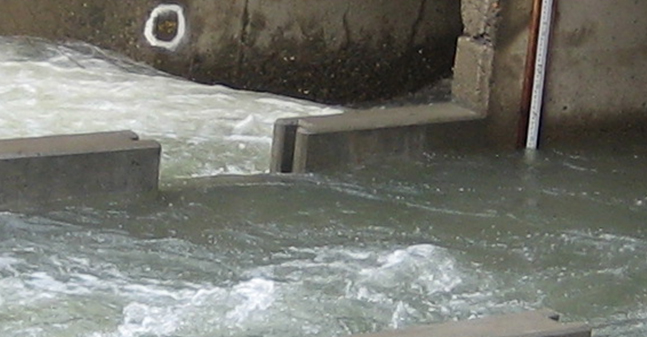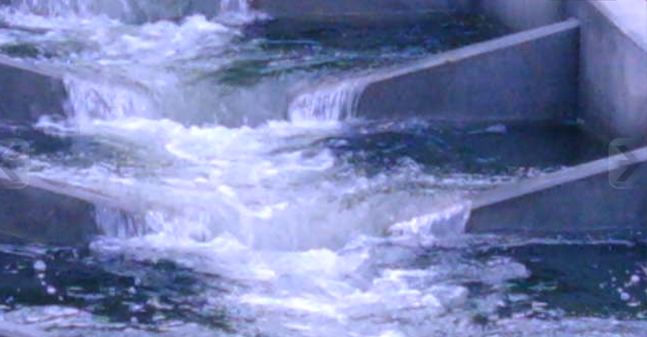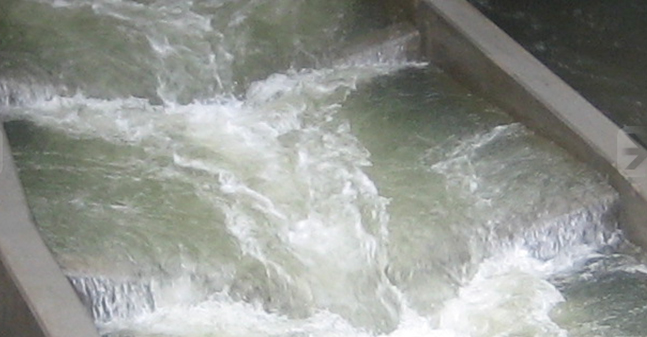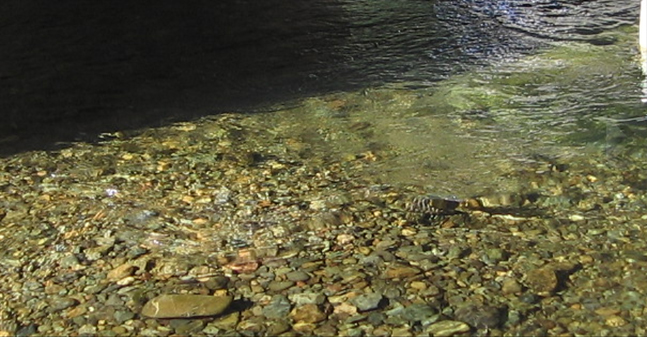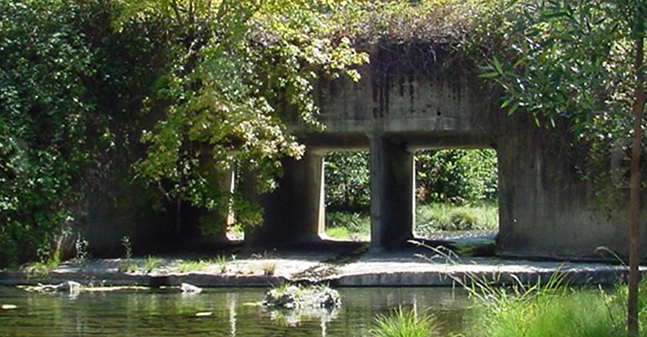Pool and Chute Fishway
Pool and Chute Fishway
Location: Big Sulphur Creek, tributary to the Russian River, California
Client and Partners: CalPine Operating Services Company, Prunuske Chatham, Inc. , Veizades and Associates
Both the Russian River and Big Sulphur Creek support runs of steelhead trout, which are listed as threatened under the Federal Endangered Species Act. Big Sulphur Creek gets its name from the geothermal activity that exists throughout much of the watershed. Within the upper portions of the watershed is a geothermal power generation facility operated by Calpine Operating Services Company. A stream crossing owned and maintained by Calpine crosses Big Sulphur Creek approximately 15 miles upstream of the confluence with the Russian River, which consists of three concrete box culverts. Original drawings for the crossing dated 1959, include a wooden fish channel along the wall of the center bay. All that remained of the fish channel were the stainless steel anchor bolts protruding from the culvert floor.
In 2002 Michael Love & Associates (MLA) evaluated and developed several alternatives for improving fish passage at the crossing. After considering various types of fish passage structures, a pool and chute fishway was selected as the most appropriate for the site. This type of fish ladder can provide suitable passage conditions at high flows while passing debris and sediment relatively well. Hydraulically, they produce streaming (chute) flow down the center of the ladder and plunging flow along the edges.
The hydraulic design of the ladder included developing pool and weir dimensions that produce a low turbulent pathway along the edges of the fishway that adult and juvenile steelhead can ascend over a wide range of streamflows. Flow control sills with steel stoplogs were installed near the fishway exit (upstream end) to control the proportion of flow entering the fishway and extend its range of operational streamflows.
The fishway extends through the center culvert and concrete outlet, which required cutting and lowering the culvert floor and apron. MLA worked closely with Veizades and Associates to arrive at a design that is structurally feasible and cost effective in this seismically active area.
MLA developed the civil design drawings and a detailed design report that documented the decision process and analysis leading to the final design. This was used for preparation of the environmental documentation and permits and to guide the decision process during construction, which was overseen by Prunuske Chatham Inc. in 2008.

